The Ancient Occult Roots of the Fabian Society, Cybele and the Mysteries of Eleusis (part 4)
[This is part four of an ongoing series. Part one is here, part two is here and part three is here.]
Although the organization known as the Fabian Society was outwardly materialistic and espoused “socialist” principles to attract the poor, it was rabidly elitist with all of its leaders espousing both imperialism (dubbed ‘Social Imperialism’) and eugenics- the science of eliminating useless eaters.
As outlined in part two of this series, the stained-glass mirror commissioned by Fabian leader George Bernard Shaw and featured prominently in the society’s London School of Economics features the infamous icon of a wolf in sheep’s clothing and leading agents of the organization forging a new world religion.
The name ‘Fabian Society’ was itself indicative of two things:
1) the techniques of warfare used by this sect, and
2) the revival of an ancient mystery religion with modern clothing.
The name Fabian was based on the example of the Roman oligarch Quintus Fabius Maximus (280-203 BC) who became dictator of Rome during the Second Punic War (218-201 BC) where he innovated a technique of attrition and psychological warfare to defeat Hannibal.
This period of the Punic Wars with Carthage which saw Rome’s ancient ally back-stabbed by a ‘scorched earth’ program that ultimately annihilated the race of Carthaginians- is extremely important for imperial grand strategists as the central moment of change that set the character of Rome as an empire (although it would take another 150 years before ‘officially becoming’ one).
Saint Augustine of Hippo (354-430 AD) later reflected upon the source of Rome’s demise and located this correctly in the decision to destroy its one-time ally saying: “After the destruction of Carthage and before Christ’s coming, the degradation of traditional morality ceased to be a gradual decline and became a torrential rush.”
Caption: Rome and Carthage prior to the first Punic War (264-241 BC)
While Fabius’ tactic of slow attrition was unquestionably an important factor in the selection of the name “Fabian Society”, and was used to devastating effect by the society bearing his name during the 20th century, a lesser appreciated reason exists which has more to do with the revival of a new system of stasis, earth worship, de-industrialization and anti-humanism under leading Fabians from H.G. Wells, and Lord Bertrand Russell, to Julian Huxley (in the form of transhumanism, ecologism and cybernetics).
Magna Mater Cults Introduced into Rome
This lesser appreciated, yet more important factor is found in the importation to Rome of the cult of Cybele-Attis-- sometimes referred to as the Cult of Gaia, or the cult of Magna Mater (ie: Great Earth Mother) in 205 BC.
Caption: The altar of Cybele. 295 AD Roman bas-relief. The goddess drives a chariot drawn by lions.
This event was extremely important, as it involved the most virulent eastern cult (also affiliated with Isis) to become a dominant force shaping Roman customs and the behavior of the elite. Quintus Fabius Maximus didn’t import the Cybele cult alone, but was responding to the commands of the Sibylline priests… who were a committee of 15 who had sole authorization to interpret the writings of the sacred Sibylline books (now long destroyed). By the 3rd century BC, the Sybelline Books were housed in the Temple of Apollo on Palatine Hill in Rome and it was on this same hill that the Temple of Cybele was soon constructed following the prophecy of the Sibylline priests.
The 15 initiated priests were alone permitted to touch and interpret the messages within the Sibylline books which shaped every major decision Rome took in times of crisis, and also oversaw which cults received permission to operate in Rome. It was during the 2nd Punic War that the Sibylline priests told the senate and Fabius that unless the cult of Cybele were imported from Anatolia, then Hannibal was sure to win. Although it took several years to negotiate the new cult, it was finalized in 205, and within two years, Hannibal was defeated.
These elite high priests thus influenced the Senate for nearly 900 years (until the Roman General Stilicho ordered their destruction along with the banishment of the Mithraic Cult in 405 AD).
The Roots of the Sibylline Books
According to the Roman historian Livy, the Sibylline books were acquired by Rome’s last king Tarquinius Superbus during the 6th century BC, although the details are wrapped in mystery.
Mate Marton of Eötvös Loránd University notes that: “By the end of the 3rd century they were connected with Greek rituals, Apollo, and, by association, prophecy.’ As Rome set foot on Greek soil, and with it Roman ambassadors and generals became regular visitors of Delphi, the books slowly began losing their unique monopoly as state oracle and started to be affiliated with a Sibyl or Sibyls.”
A Sibyl is a term for a priestess/prophetess that acted as a medium channelling messages from the Gods to man. Like modern “channelers”, mediums, clairvoyants, or Theosophists surfing the astral plane and speaking to spirit demons and the dead, the Sibyls played a similar role in the ancient world.
As Cynthia Chung outlined in The Ancient Roots of Occult Societies, one major Sibyl of the ancient world was the pythian priestess of Apollo at Delphi which coordinated a network of mystery cults shaping the geopolitical landscape of the kingdoms surrounding the Mediterranean.
The Sibylline books delivered a prophecy in 45 BC, during Rome’s war against the Parthians, that only an emperor would be capable of winning the war.
Since Rome had not had a king since Tarquinius’ disposal in 579 BC, this prophecy was used to justify the creation of the roman emperor with a god-man as Ceasar standing, like Egypt’s Pharaohs, as a godhead. The pressure to accept this emperorship was placed on the war hero Julius Caesar (100-44 BC)… who by all accounts, really did not want the position, turning the offer down three times before accepting. His final acceptance of the position of emperor was used by a group of senators led famously by Brutus and Cassius to justify his assassination.
Brutus’ foolish actions led to a bloody civil war (32-30 BC) followed by Rome’s submersion into an imperial hell managed by mystery cults and war.
These same priests oversaw the introduction of the Persian mystery Cult of Mithra into Rome which every member of the Praetorian guard and Roman legions soon joined. The earlier Phrygian mystery cult of Cybele-Attis which the priests at the Temple of Apollo demanded be introduced into the Roman pantheon coordinated closely with the priesthood of Mithra, with many of the wives, and daughters of the Mithraic (male-only initiates) enmeshed into the rites of Cybele.
As outlined in part 3 of this series, the Cult of Mithra had been introduced into Rome by Pompey the Great in 63 BC, but appears to have faced a setback when Julius Caesar defeated Pompey’s forces amidst a civil war in 45 BC.
Caption: The Palatine Hill, where the Sibylline Books were kept (Herodotus / CC BY-SA 4.0), and also where the Temple of Cybele was constructed
While there are outward differences in the rites of the two cults (Cybele and Mithra), there were also many similarities. Both featured exoteric (outward) teachings for the lower degrees and uninitiated and esoteric (secret) teachings for the higher degrees of initiated. Both pagan cults featured sacrifices, self-denying stoicism mixed with hedonistic release, following Apollonian-Dionysian models of behavior, and something called the Taurobolium.
The Taurobolium were gruesome ceremonies involving the sacrifice of bulls, which bled onto the priests overseeing the mystery rites, which featured prominently in the rituals of both cults.
The early Christian polemicist Prudentius, 348- 410 CE described the rites of Cybele in the following terms:
“There are rites in which you mutilate yourself and maim your bodies to make an offering of the pain. A worshipper possessed thrusts the knife into his arms and cuts them to propitiate the Mother goddess. Frenzy and wild whirling are thought to be the rule of her mysteries. The hand that spares the cutting is held to be undutiful, and it is the barbarity of the wound that earns heaven. Another makes the sacrifice of his genitals; appeasing the goddess by mutilating his loins, he unmans himself and offers her a shameful gift; the source of the man's seed is torn away to give her food and increase through the flow of blood. Both sexes are displeasing to her holiness, so she keeps a middle gender between the two, ceasing to be a man without becoming a woman.” (Prudentius, Perist. 1059-1073)
Additionally, both sects (Mithra and Cybele) featured death and rebirth rituals, involving the shedding of old identities of initiates in favor of new constructs groomed by a higher priesthood.
The priests- dubbed ‘Hierophants’ of the Cybele Cult (called ‘Galli’) were all castrated as part of their initiation which is why the conservative families of Rome ultimately demanded the cult be removed after too many of their sons were given over to ritual castrations. Wasson notes that “Followers of her cult would work themselves into an emotional frenzy and self-mutilate, symbolic of her lover’s self-castration.”
Caption: Funerary relief of a androgynous gallus priest, member of the Magna Mater cult of Cybele, 2nd century AD (Public Domain)
One of the main features of the castrated galli priests were belts of knucklebones used for self-flagellation. This would be a practice adopted by the Benedictines, Franciscans and Jesuits, whose ropes would serve an identical purpose in later years.
Historian Molly Dowdeswell writes: “After their act of castration, the galli wore exclusively women’s clothing. As signs of their positions, they wore a type of crown, maybe a laurel wreath, as well as gold bracelets called an occabus. The women’s clothing they wore was often yellow and accompanied by a turban and earrings. It is thought that these men also bleached their hair, which they kept long, and that they wore makeup. They would have walked around in groups telling fortunes in exchange for charity.”
Caption: A statue Attis, after the emasculation. In his left hand is a shepherd's crook, in his right hand a pomegranate. His head is crowned with bronze rays of the sun and on his Phrygian cap is a crescent moon. (Dennis Jarvis / CC BY SA 2.0)
Within 200 years of its official acceptance by the Romans, worship of The Great Mother had become one of the three important cults of Rome, though it had few priests, it’s influence was extreme. The other two cults were those of Isis and Mithra and all were united in their common hate of Christianity and Judaism.
Caption: The self-castrated Attis- whose suicide is redeemed by his cyclical rebirth becoming the god of vegetation. Both Attis and Mithra are characterized by their Phrygian caps (later adopted by the Venetian Doge) and the ritual of castration of a bull during ceremonies.
However. by the reign of Emperor Claudius in 41 CE, the Cult of Cybele and Attis was given full support and the rampant orgies, hallucinogenic cocktails and bloodlust sacrifices overseen by elite eunuchs created a culture of insanity throughout Rome.
Temples of Mithra and Cybele (better known as Gaia in our modern age) have been found linked together by archaeologists during the past century implying that where one Cult went, the other always followed.
The famous researcher Jessie Weston who’s 1920 Ritual to Romance demonstrated the Mithraic origins of the Grail Myths, noted this synergy between Mithraic and Cybele/Attis cults:
“Between the cults of Mithra and of Attis, there was a close and intimate alliance. In parts of Asia Minor the Persian god had early taken over features of the Phrygian deity… The union between Mithra and the goddess Anahita was held to be the equivalent of that subsisting between the two great Phyrgian deities Attis-Cybele. The most ancient mithreum known, that at Ostia, was attached to the Metroon, the temple of Cybele. At Saalburg the ruins of the two temples are but a few steps apart.” [From Ritual to Romance p. 137-138]
Eleusinian Mysteries
Medievalist scholar Donald Wasson writes: “Known as the Great Mother or Magna Mater, Cybele, whose chief sanctuary was at Pessinus, was one of the early female deities, first appearing in the province of Lydia as a goddess of the mountains. Arriving from Phrygia, she made her initial appearance in Greece in the 5th century BCE with a temple in Athens (the Metroum); the Greeks identified her with the goddess Rhea (mother of the Olympians) and Demeter (goddess of the harvest). While never achieving great popularity in Greece, the cult reached Rome around the end of the 3rd century BCE.”
Caption: Relief of Demeter / Archaeological Museum of Eleusis, Greece
Manifesting with diverse names throughout the ancient world, in Greece, Cybele’s incarnation as Demeter placed her at the epicenter of the Eleusinian Mysteries which initiated generations of elites into a rite of passage into an initiation process of death, rebirth, and at the end of the process, ultimately ‘discovering’ a mystical deification of the self devoid of moral reason. As Albert Pike writes of the highest initiation: “Those initiated in the Mysteries of Eleusis believed that the Sun blazed with a pure splendor for them alone.”
Mounting evidence has indicated that drugs, sexual excesses, mixtures of torture/radical withholding of bodily needs (followed by release) played major roles in this initiation.
Modern occultist Marina Abramovic’s methods of initiating her students such as Lady Gaga involves a mixture of these techniques, and undoubtedly, occult psychiatrists managing the CIA’s MK Ultra program during the Cold War studied these methods of de-patterning/reprogramming test subjects before extending their findings to cultural programming.
None other than Dr. Albert Hoffman, the chemist who discovered LSD-25 in 1942 which was put to wide use in MK Ultra became the world’s leading authority on the Eleusinian Mysteries, having written a book in 1976 called ‘The Road to Eleusis’ (along with JP Morgan vice-President/psylocibin guru G. Gordon Wasson). Here Hoffman and his two co-writers correctly point out that the roots of LSD-25 (which are derived from a form of blight that grows on wheat called ‘ergot’) was among the sources of the secrets of Eleusinian rites of initiation.
“Ergot of barley is the likely psychotropic ingredient in the Eleusinian potion. Its seeming
symbiotic relationship to the barley signified an appropriate expropriation and transmutation of the Dionysian spirit to which the grain, Demeter’s daughter, was lost in the nuptial embrace with earth. Grain and ergot together, moreover, were joined in a bisexual union as siblings, bearing at the time of the maiden’s loss already the potential for her own return and for the birth of the phalloid son that would grow from her body. A similar hermaphroditism occurs in the mythical traditions about the grotesquely fertile woman whose obscene jests were said to have cheered Demeter from her grief just before she drank the potion.”
The priesthood which served the psychedelic beverage during the ceremonies was always performed by eunuchs, and as we will see was also central to the counterparty of Cybele named Attis (the son/husband of Cybele who self-castrated in terror/love of his mother, bled to death and was reborn as the god of vegetation. Hoffman and Wasson write of this:
“As he [the priest] performed the service, he intoned ancient chants in a falsetto voice, for his role in the Mystery was asexual, a male who had sacrificed his gender to the Great Goddess.”
In the 18th century, the ceremonies of Eleusis would be performed by leading figures of London’s satanic Hellfire Club that met in underground caverns located under Medmenham Abbey leased by Sir Francis Dashwood (Chancellor of the Exchequer of England). The Abbey had formerly been a Cistercian Order in the 13th century, and like all Mithraic cults, selected its location based upon the vast caverns located below which had been Mithraic altars built during Roman times.
Above the caverns, Dashwood restored the decrepit St. Lawrence Church in 1751 using as inspiration the Sol Invictus (Mithraic) Temple that had recently been discovered in Palmyra, and he dubbed his occult society ‘The Order of Knights of St. Francis (sometimes called ‘The Medmenham Monks’) as a not-too-subtle reference to 1) his own name, 2) the Abbey above the caverns, and 3) St. Francis of Assisi whom, as we established, created an order which served as a bridge between the Benedictines and later Jesuits.
The satirical painter William Hogarth astutely captured this irony in his biting rendition of Sir Francis Dashwood dressed as St Francis of Assisi, except featuring an erotic novel instead of a bible, a naked woman instead of Jesus, a Venetian masque, and the figure of fellow Hellfire leader Lord Sandwich as a lunar god instead of a hallow indicated the Dionysian orgiastic ceremonies performed at night by the initiated.
Hellfire Club member John Wilkes (Royal Society member, and grandfather of Lincoln’s assassin) stated “No profane eye dared to penetrate the English Eleusinian Mysteries of the Chapter Room where the Monks assembled on solemn occasions […] secret rites performed and libations to the Bona Dea”. Bona Dea was the name for earth mother Magna Mater, whom as established earlier is known variously as Demeter, Aphrodite, Venus and Cybele.
After redesigning the abbey above the caverns under the gothic style, Dashwood placed a banner above the entrance that read “Do What thou Wilt”… which brings us to another initiate of the Eleusinian Mysteries.
Caption: The Dashwood Mausoleum with St. Lawrence’s Church tower behind.
Aleister Crowley (1875-1947), self-professed anti-Christ, occultist, and British Agent famously developed upon his own variation of the Rites of Eleusis while heading the German branch of the Ordo Templi Orientis (OTO). In Crowley’s Eleusinian working, mescaline was the hallucinogenic drug of choice– which accompanied long days and nights of orgies, sacrifice and other ‘outer body’ experiences. In Crowley’s Eleusinian Ceremony, the same 7 gates of initiation as held by the Mithra Cult are featured prominently.
Crowley’s seven rites of Eleusis (which were made into a theatrical performance) were named ‘The Rite of Saturn, Jupiter, Mars, Sol, Venus, Mercury, and Luna.’
Even Rudolf Steiner (1861-1925), President of the German and Austrian branches of the Theosophical Society, and founder of Anthroposophy, spoke at length about the glories of the mysteries of Eleusis and asserted that it was through this rite that pre-Christian Greeks were able to have communion with the spirit of the unborn Christ: “The Greek disciple learned to understand the Mystery of Christ in a pre-Christian period; again it was in a spiritual way that the Christ was placed before those to be initiated into the Mysteries of Eleusis.”
Steiner went on further to state that “All that is bound up with the Eleusinian Mystery is intimately connected with what we call our anthroposophical striving.”
Not just speaking of his Anthroposophical followers, Steiner went further and stated that “All that is connected with the Mystery of Eleusis, and all that has been achieved by the author in the historical re-awakening of the principles of initiation in the various epochs, corresponds to what is deepest and most intimate in the European soul.”
Satanist high priest and leading general of the confederacy during the civil war Albert Pike (1809-1891) described the rites of Eleusis in his Morals and Dogma (1871): “The Mysteries of Eleusis, celebrated at Athens in honor of Ceres [aka Demeter, Cybele], swallowed up, as it were, all the others. All the neighboring nations neglected their own, to celebrate those of Eleusis; and in a little while all Greece and Asia Minor were filled with the Initiates. They spread into the Roman Empire, and even beyond its limits.”
In 1870, one of Albert Pike’s lieutenants in the Scottish Rite named John Yarker (1833-1913) split off from the Ancient and Accepted Scottish Rite of Freemasonry in order to create a new masonic order dubbed the Ancient and Primitive Rite of Memphis Mizraim. Yarker became a leading theosophist, Martinist Freemason, co-founder of the Hermetic Order of the Golden Dawn, joined the British Israelite Quator Coronati lodge in 1887, and co-founded the Ordo Templi Orientis (OTO) where he recruited Theodor Reuss and Dr. Franz Hartmann in 1902.
Both Reuss and Yarker worked closely with Rudolf Steiner in the Rites of Memphis and Mizraim and Steiner speaks at length about his affiliations with Yarker in his Autobiography describing his membership payments to learn Yarker’s rites. Steiner and his wife Marie von Sivers master and adapt the rite to their own lodge called ‘Mystica Aeterna’ expanding membership to women. Pro-Steiner researcher Peter Koenig writes that on June 15, 1907 “Reuss sends Steiner an Edict making Steiner a 33, 90 and 96 degree of Berlin and independently acting General Grandmaster of the Sovereign General Grandcouncil of the Mizraim-Rite of Germany. The stationary bears the expressions “Memphis and Mizraim Rite of Masonry, Order of Oriental Templars and Esoteric Rosicrucians”.
Yarker and Reuss also recruited Aleister Crowley to the OTO at this same time, giving the self-professed Anti-Christ full control over the United Kingdom of Great Britain and Ireland OTO in 1912. In 1913, Crowley became Grand Master of the Rite of Memphis-Mizraïm, and in 1914 wrote a new constitution and gnostic mass for the international OTO.
For those who may be troubled by the Crowley-Steiner relationship, the work of academic occultist Carl Abrahamsson may prove useful in illustrating the fact that the same occult workings play out in both men’s practices- except modified by Apollonion vs Dionysian approaches.
Meanwhile Dr. Franz Hartman was acting president of the Indian Theosophical Society and in 1907 alongside Annie Besant who became the first female member of the theosophy-infiltrated Indian Congress Party that later collaborated with the Nazis. Hartmann also co-founded the Order of the New Templars (soon to be led by Nazi occultist Herman Goering) and also founded (with Crowley) the Argentum Astrum (A∴A∴). Through Argentum Astrum, the Hellfire Club’s motto of ‘Do What Thou Whilst’ was here re-branded as ‘The Law of Thelema’ by Crowley.
John Yarker also practiced the Mysteries of Eleusis and in his book ‘The Arcane Schools’ describes how the rites continued through the occult underground after Rome collapsed writing: “The Eleusinian, Serapian, and Mythraic Mysteries were all very popular in Rome, and spread into all countries, practising their rites side by side with the aboriginal Mysteries, for the utmost tolerance existed amongst all the priests. All are known to have existed in Britain, flourishing generally until the 4th century of Christianity, and practised long after in secret. Besides the State Mysteries, Alexandria became the centre whence radiated the Mystic schools, the Cabala, Gnosticism, Neo-Platonism, and Arcane Christianity.”
Yarker candidly admits that the Rites of Eleusis always stood in opposition to “their bitter enemies the Christians.”
Reuss, Hartmann, Yarker, Crowley, Steiner, Carl Jung and many other occultists of the pre-WWI era frequented the Ascona Lodge in Monte Verita, Switzerland which Cynthia Chung writes extensively about here.
Masonic priest (33rd degree Scottish Rite) Manley P. Hall (1901-1990) additionally wrote extensively of the Mysteries of Eleusis as a practice that was geared to “initiating” subjects into the belief that the spirits of the dead were shaping reality, and that the true initiate of gnostic knowledge learned to give way to the dark unconscious forces (shaped by countless dead spirits infused within our soul) below our conscious domain.
In his Secret Teachings of All Ages, Hall writes: “An ancient initiate once said that the living are ruled by the dead. Only those conversant with the Eleusinian concept of life could understand that statement. It means that the majority of people are not ruled by their living spirits but by their senseless (hence dead) animal personalities. Transmigration and reincarnation were taught in these Mysteries, but in a somewhat unusual manner. It was believed that at midnight the invisible worlds were closest to the Terrestrial sphere and that souls coming into material existence slipped in during the midnight hour. For this reason many of the Eleusinian ceremonies were performed at midnight. Some of those sleeping spirits who had failed to awaken their higher natures during the earth life and who now floated around in the invisible worlds, surrounded by a darkness of their own making, occasionally slipped through at this hour and assumed the forms of various creatures.”
Jung’s Revival of Mithraism
If this smells at all like Carl Jung’s theory of the collective unconscious, then don’t be surprised as Jung was himself a devoted believer in Mithraic initiation ceremonies and a practicing occultist throughout his adult life. Throughout hundreds of lectures, Jung also spoke fondly of the mysteries of Eleusis.
In the next segment, we will explore Carl Jung’s occultism, his obsession with reviving gnostic Christianity as a new world religion and a new Mithraic Cult following the lead of the same Julian the Apostate, whose soul he believed to himself to be the reincarnation.
This will in turn set the stage for the New Age counter-culture overseen by occultists managing the Eranos conferences in Monte Verita and the Esalen Institute, as well as the new Mithraic theosophist revival under the gospel of the coming world teacher dubbed “Maitreya.”




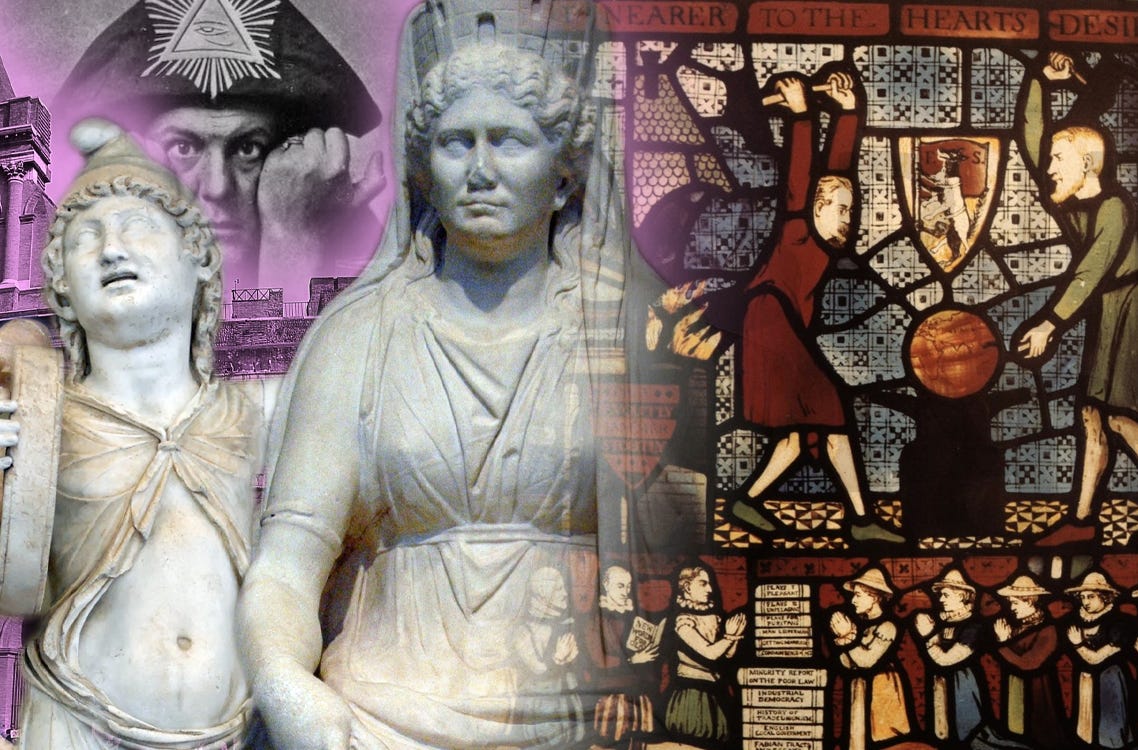
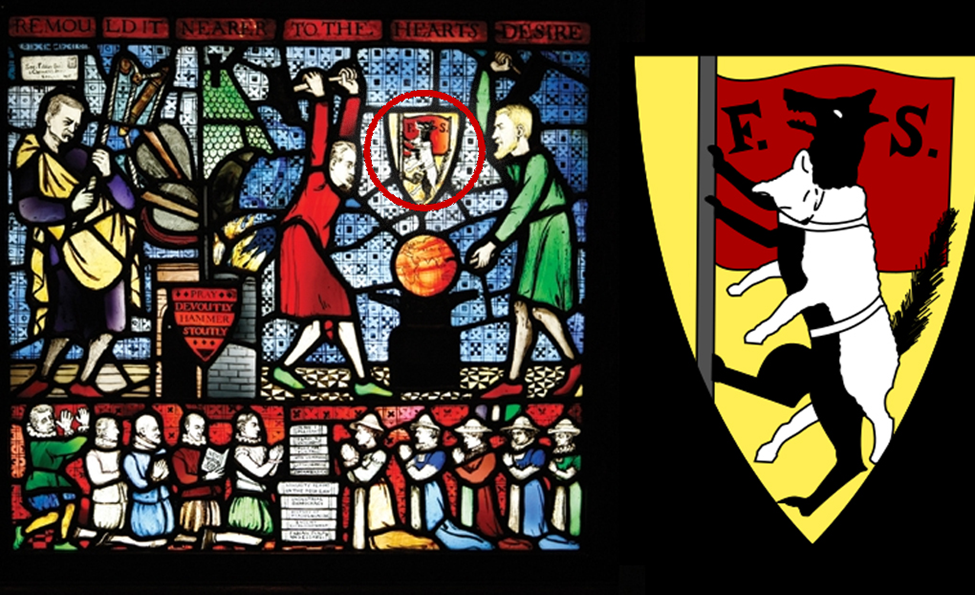
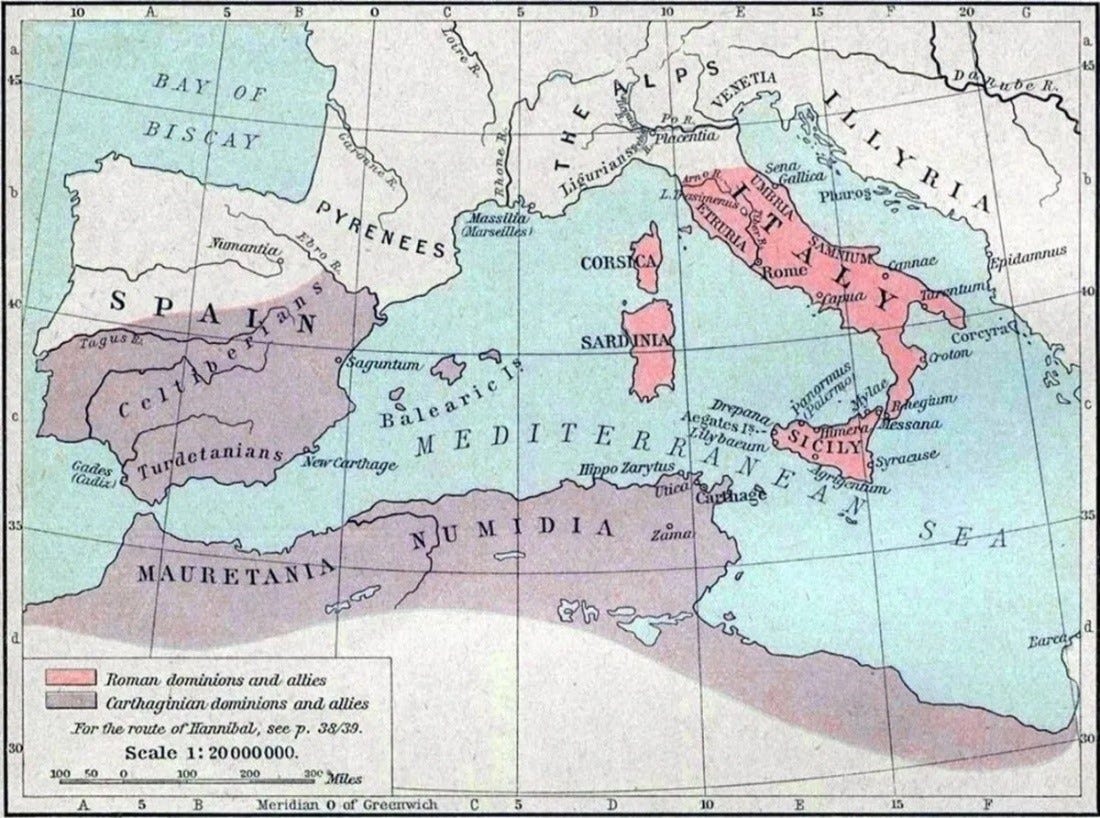
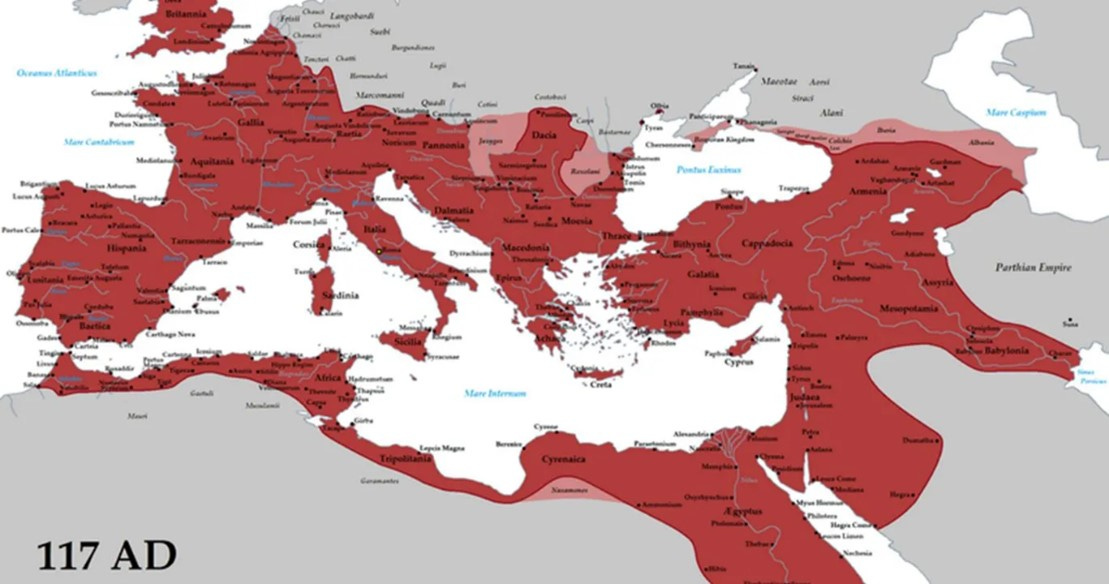
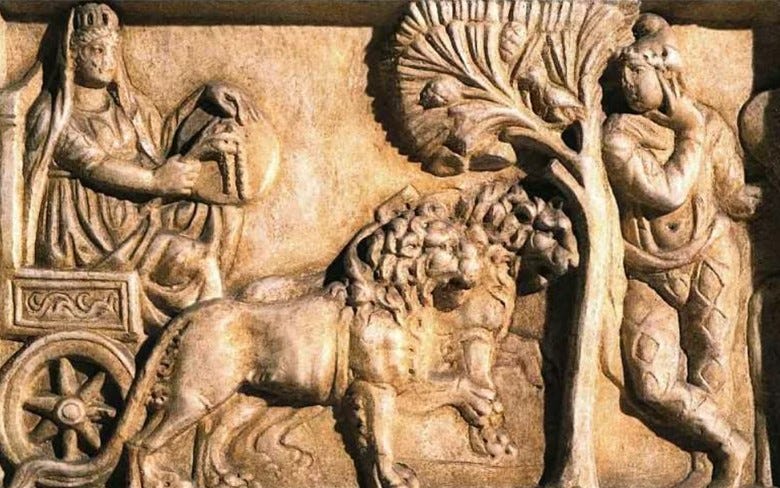

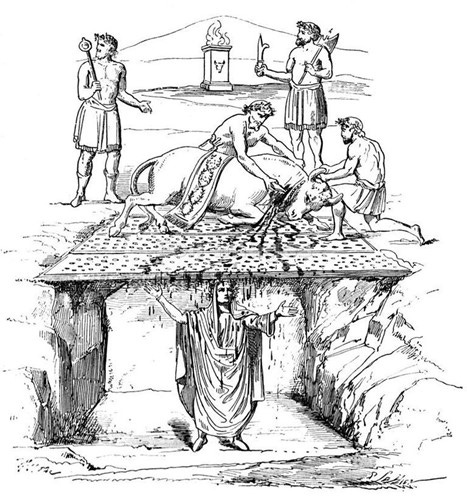
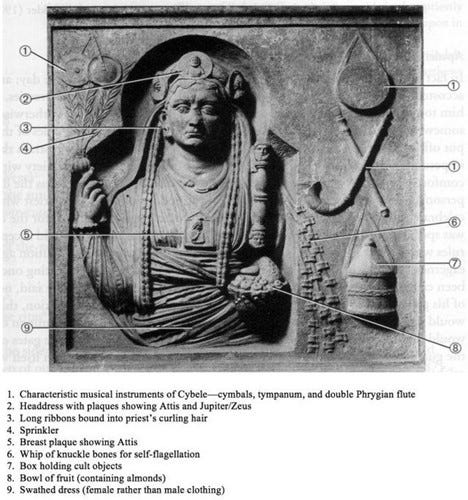
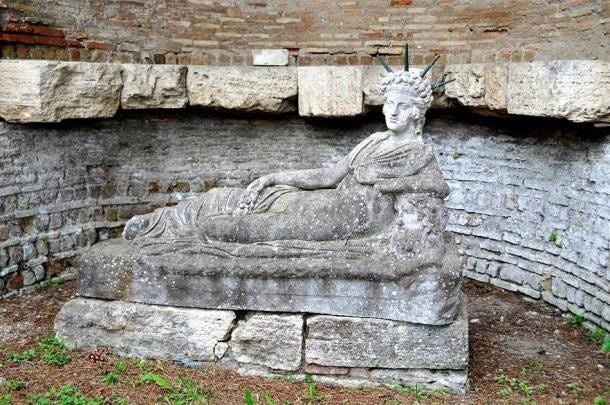
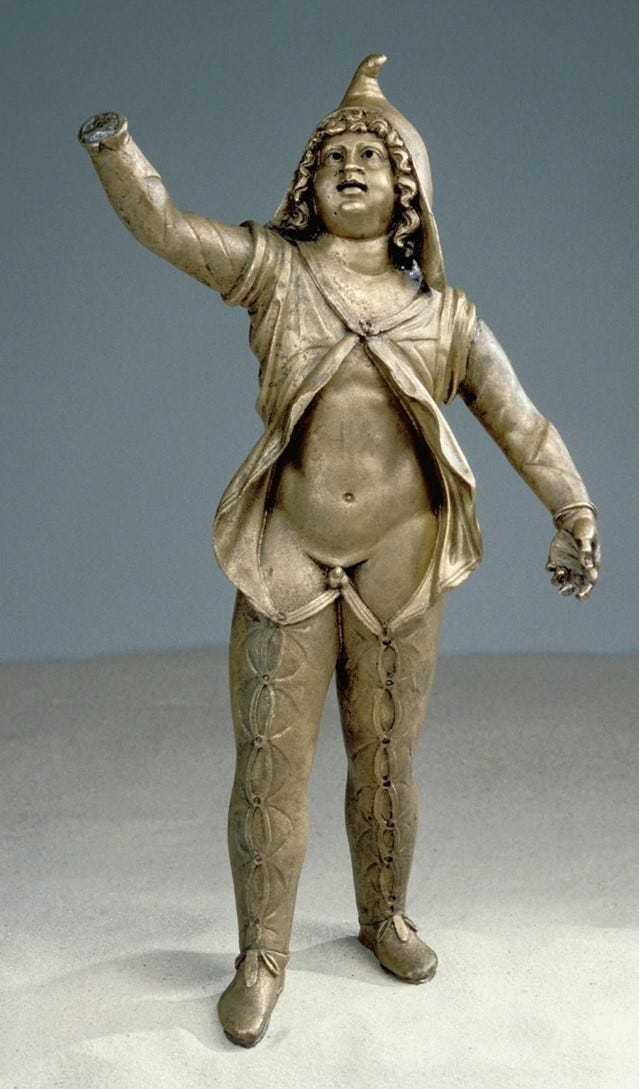
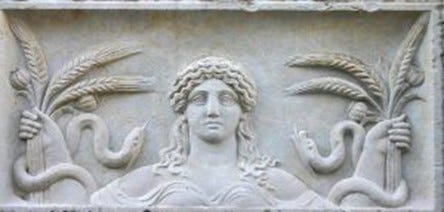
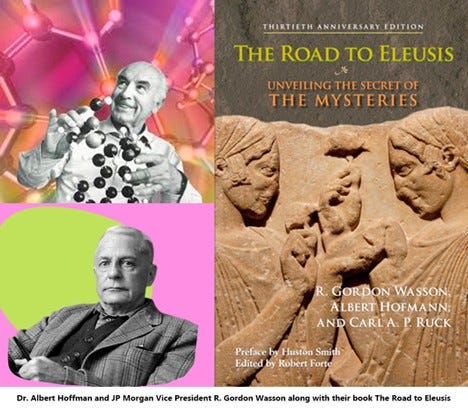
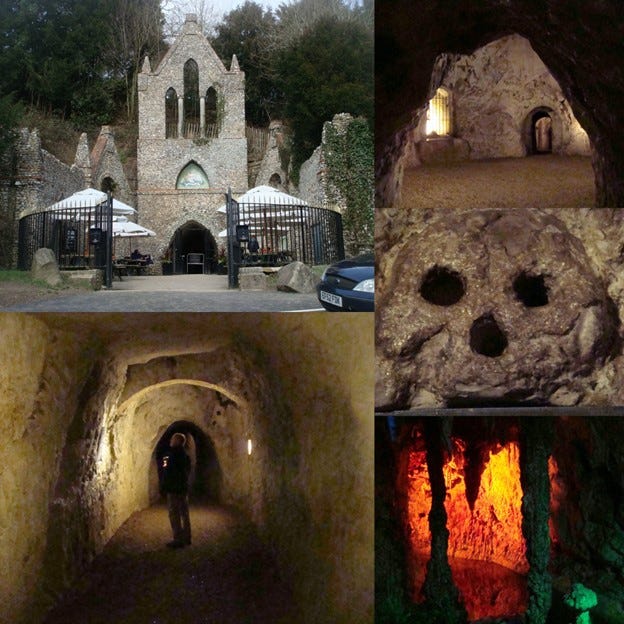
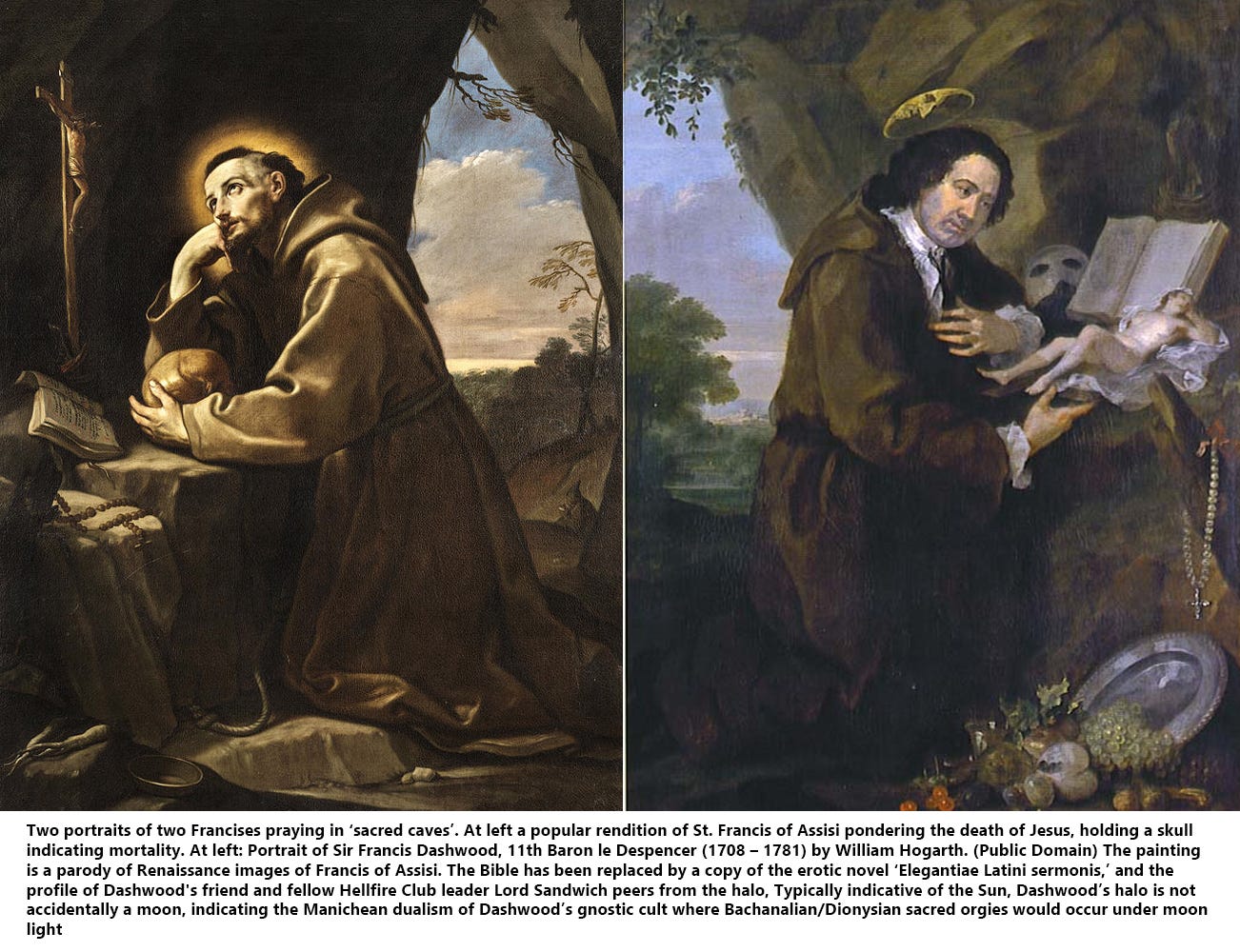

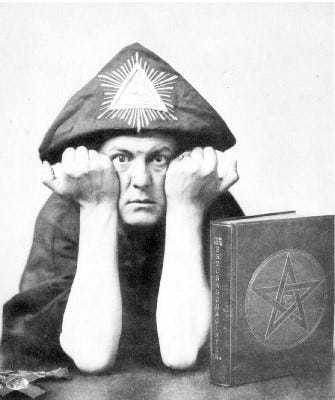
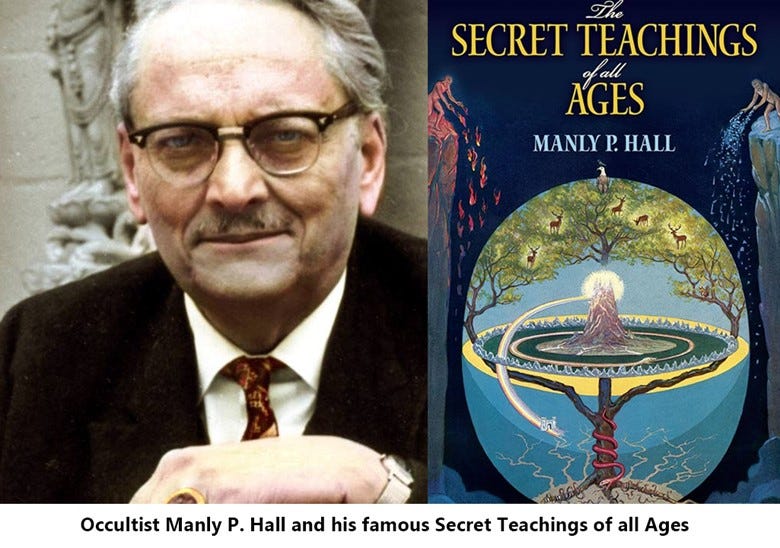



The whole life is composed of two basic aspects: mundane and occult. The mundane is what everyone can see and interact with. The occult is a deeper layer of interaction which requires personal transformation to be perceived.
This structure is nothing special or unique. It is present everywhere. In all jobs, there is a “mundane” phase, anyone can do it, and an “occult” phase that is only available to those who are true professionals and who are fascinated with the job. A gardener may be a simple trader (mundane), or a lover of plants who understands their language and can interact with them (occult). Most doctors in hospitals are mundane, and patients feel it and try to avoid them, seeking those with whom they have this special connection (occult).
This is the structure of this life. There is nothing wrong with it or bad about it. You don’t want to have mundane people in your life. You live beside them, but there is no real mutual understanding. Once this happens, people fall in love with each other - and love is the occult equivalent of mundane relations.
Marriages fall apart because the spouses are not aware of this stages in their perception. Falling in love is the bridge between the mundane (just friends) and the occult (the two of us together are more important than we are separately). Falling in love is only an invitation to explore deeper meanings of life - the ones that are not available to people who do not know love and do not let themselves be transformed by love. When this invitation is not kept alive, spouses fall back to their pre-marriage separate lives, reject the experiences from the transformation stage, and the relationship starts to erode. The occult - perceiving the deeper aspects of life and carrying them into daily routines - is the essence of this life.
The occult works on a personal level only. It is a relationship between me and me. When this transformation is used to manage other people without their knowledge, awareness or consent, it is no longer occult. It becomes evil.
The difference is tremendous.
Unfortunatly the government is used to destroy people. It is essentially organizedcrimee with a cloak of legitimacy. But they decide what is a crime or not. When they do it its's not a crime. When you do it, it's a crime.
https://open.substack.com/pub/soberchristiangentlemanpodcast/p/s2-ep2-scgp-the-government-deception?r=31s3eo&utm_campaign=post&utm_medium=web&showWelcome=true